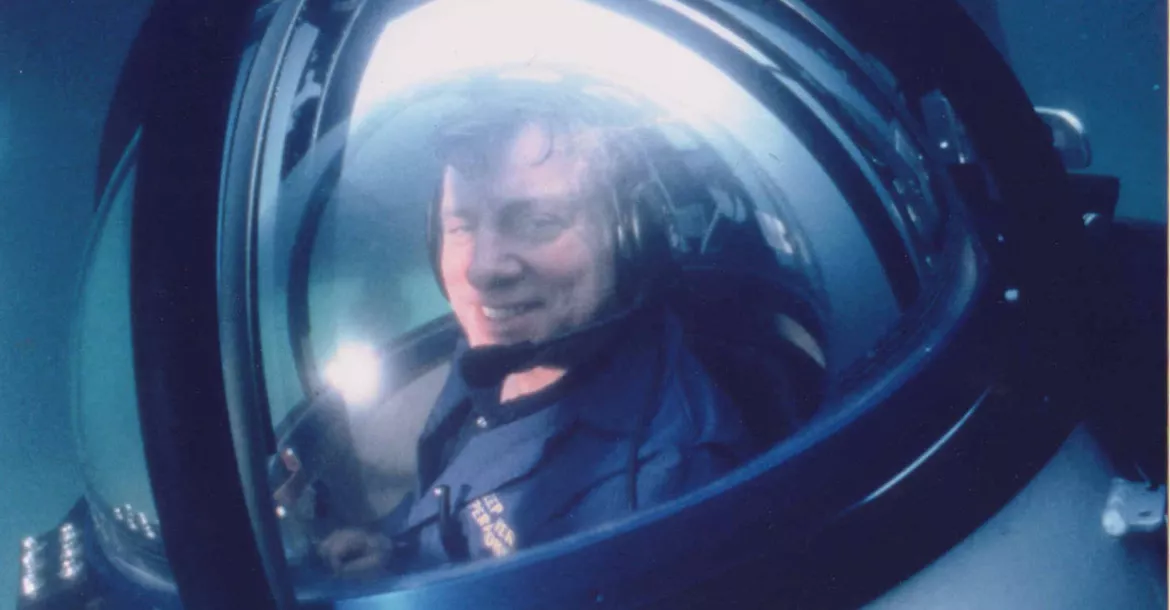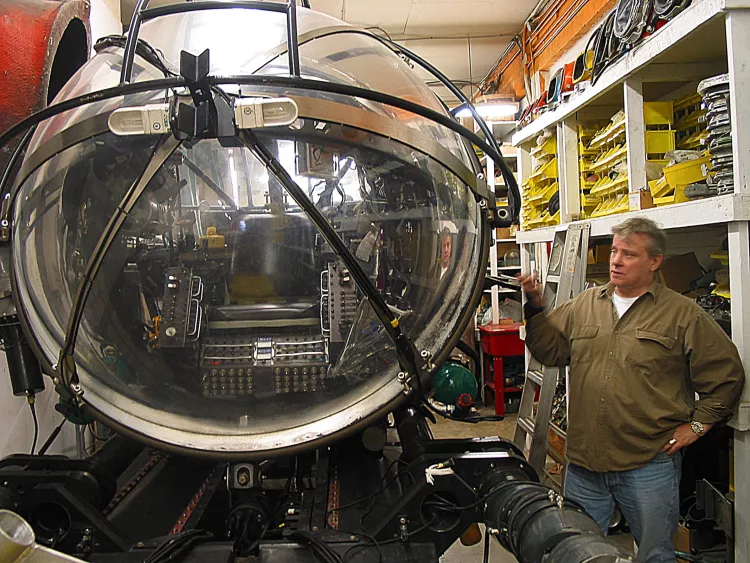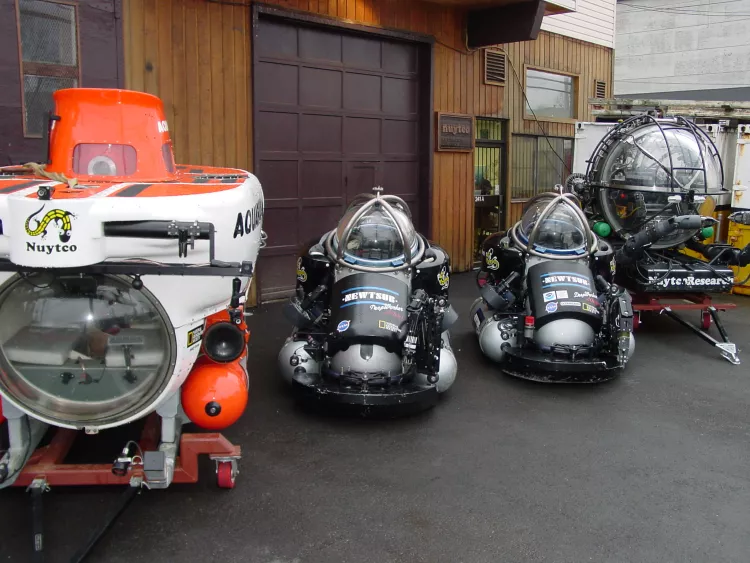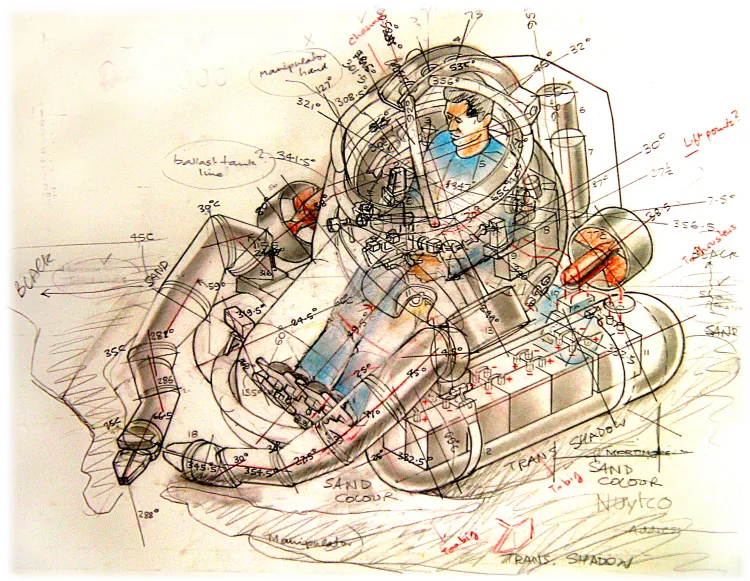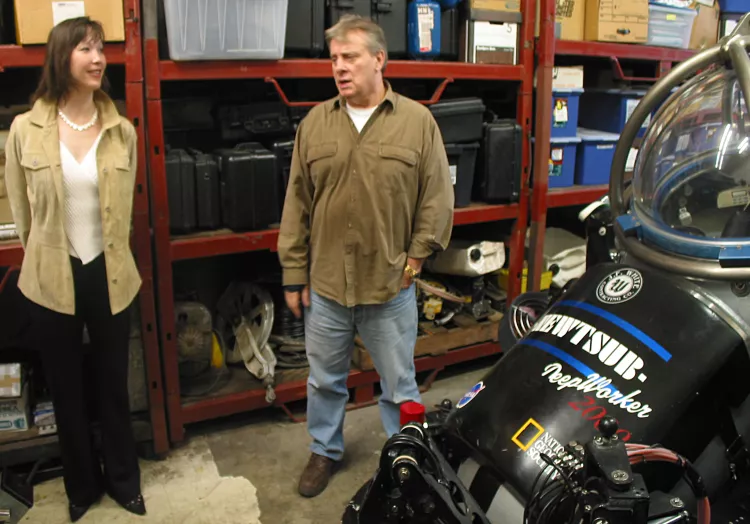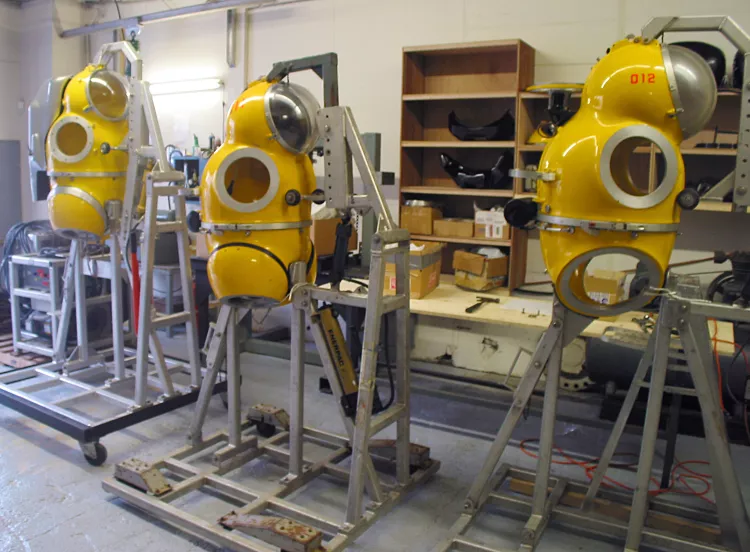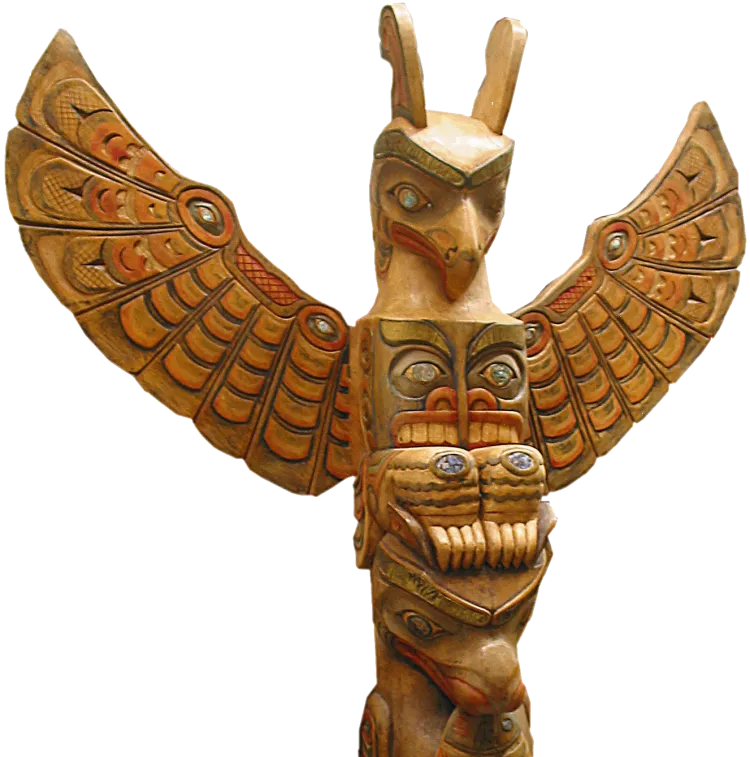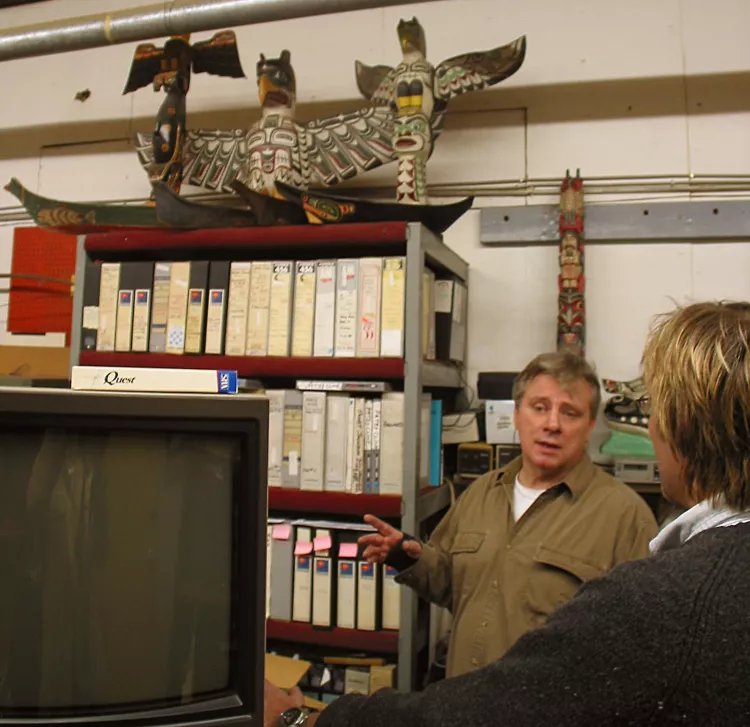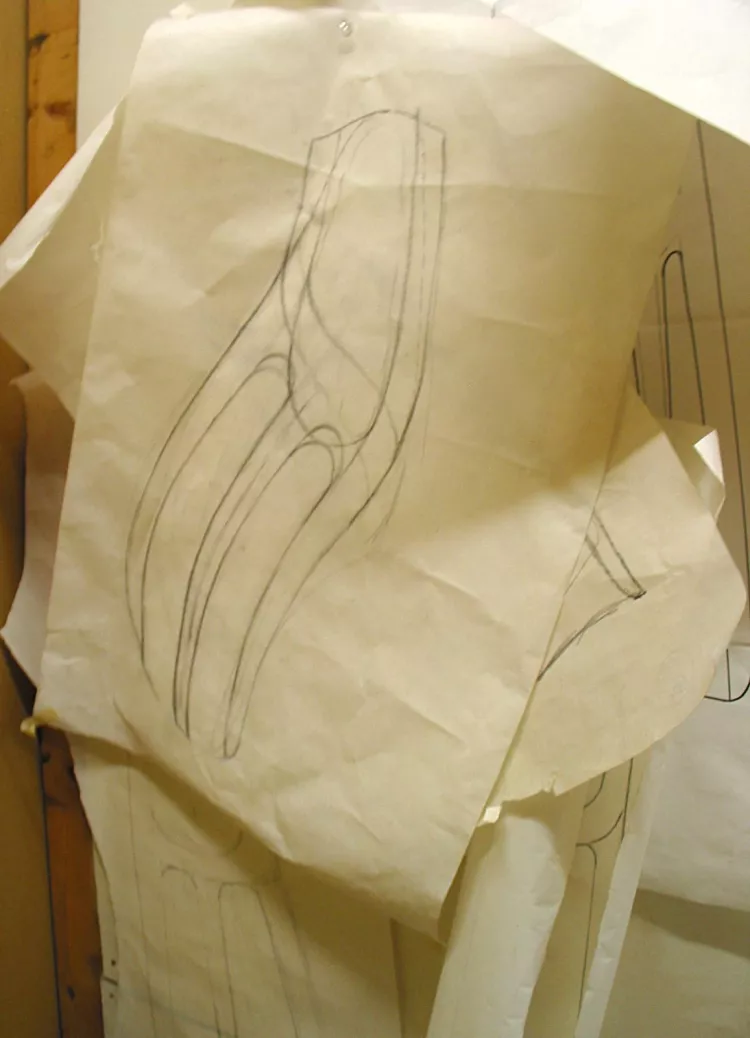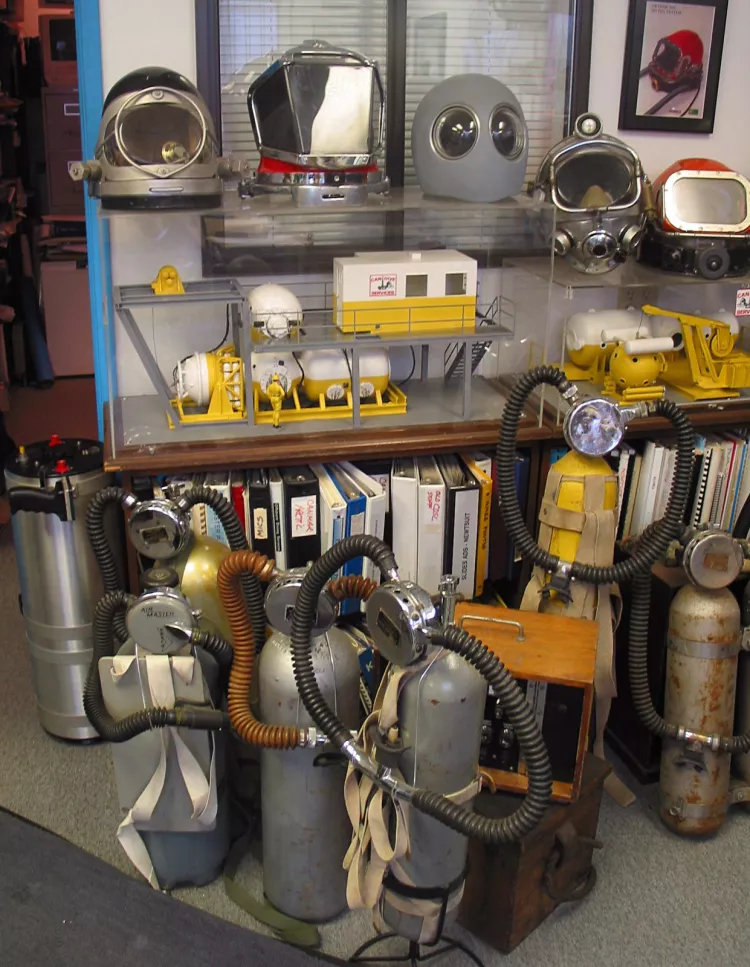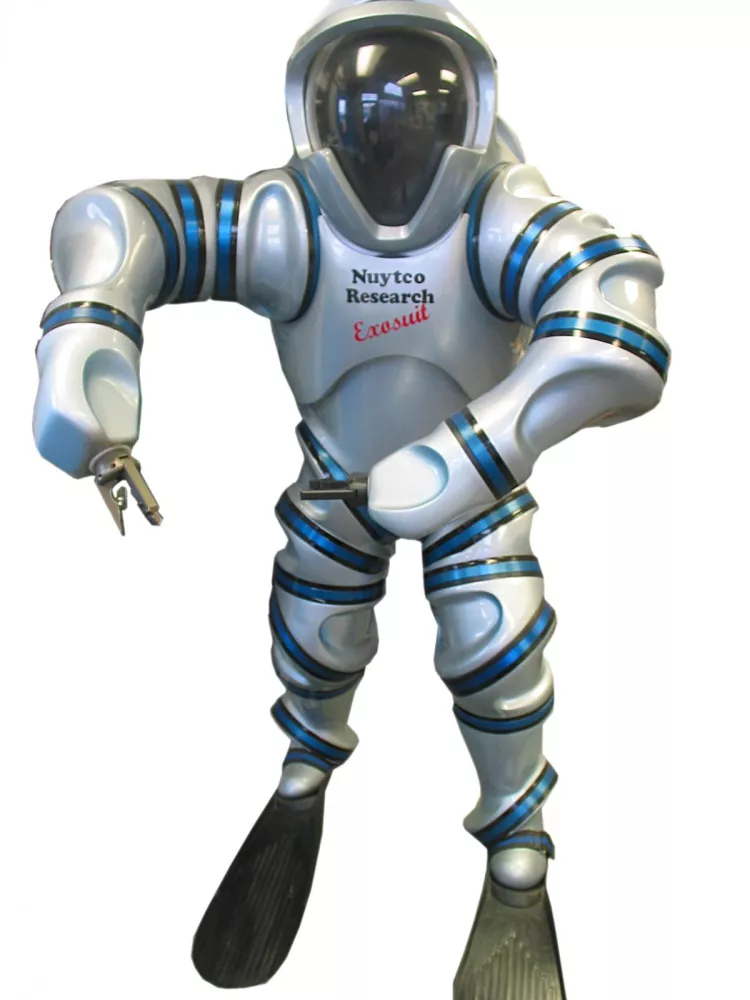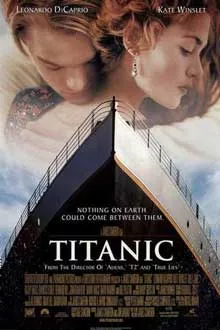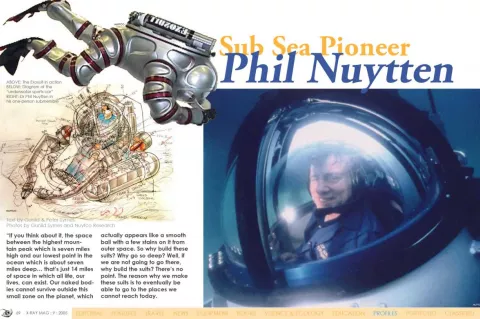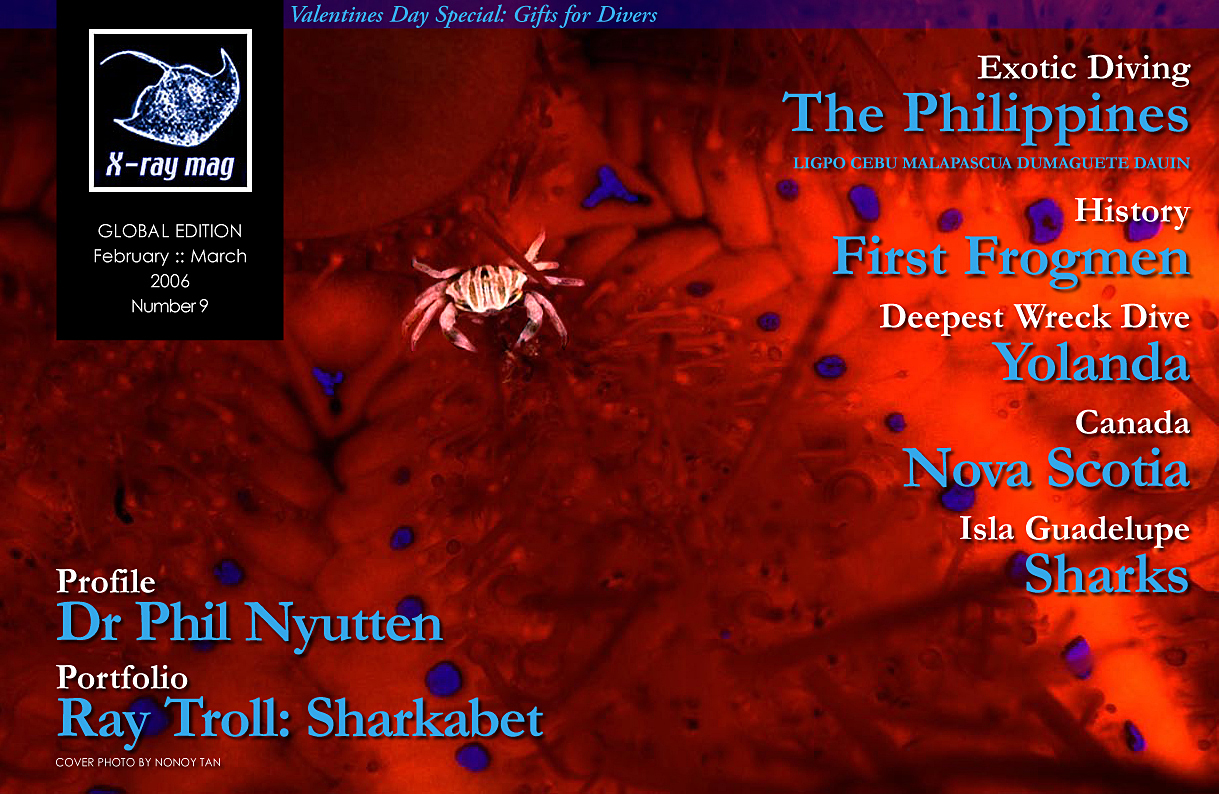“If you think about it, the space between the highest mountain peak which is seven miles high and our lowest point in the ocean which is about seven miles deep… that’s just 14 miles of space in which all life, our lives, can exist. Our naked bodies cannot survive outside this small zone on the planet, which actually appears like a smooth ball with a few stains on it from outer space.
So why build these suits? Why go so deep? Well, if we are not going to go there, why build the suits? There’s no point. The reason why we make these suits is to eventually be able to go to the places we cannot reach today.
Contributed by
So says Dr Phil Nuytten, inventor of sub sea submersibles and the NewtSuit, a deep-sea hard suit employing break through technology that allow scientists to walk the bottom of the ocean in one-bar atmosphere with a freedom and range of movement unsurpassed by other devices.
With over 40 years devoted to sub sea technology, Phil is fulfilling his goal to provide scientific, military, technical and sport divers unlimited access to continental shelf depths without decompression hazards. In this way, he hopes humanity can explore, investigate and ultimately become better guardians of our oceans.
When rays meet newts
X-RAY MAG visited Phil at his workshop in Vancouver and received a tour of the facility and his inventions by the man himself. Famous rigs that have done incredible things are lying around the place like lounge lizards…. rigs such as the micro-submersible Deep Worker, the revolutionary deep-diving system that transports scientists from National Geographic programs and deep sea explorer, Dr Sylvia Earle, for her Sustainable Seas programs, to the bottom of the sea to investigate environmental impact in the deep ocean. The unit has been affectionately tagged the “underwater sports car” and was used in a contract to recover the Space Shuttle booster rockets for NASA from the sea floor.
Then there were Deep Rover, Deep Flyer, Aquarius, Sea Otter and the revolutionary Exosuit, which stood in the front office welcoming us to the fantastic world of all things Nuytten. Exosuit, introduced by Nuytco in 2000, is a radical concept in lightweight atmospheric dive suits. The team is now investigating whether it can serve as submarine escape device for the Canadian Department of National Defence.
What was the most interesting part of the conversation with Phil was what he said about the fragility of the human body, which can only exist in the small slice of the biosphere, and how we need all these prosthesis, such as airplanes and underground tunnels, to exist in other areas.
X-RAY MAG visited Phil at his workshop in Vancouver and received a tour of the facility and his inventions by the man himself. Famous rigs that have done incredible things are lying around the place like lounge lizards…. rigs such as the micro-submersible Deep Worker, the revolutionary deep-diving system that transports scientists from National Geographic programs and deep sea explorer, Dr Sylvia Earle, for her Sustainable Seas programs, to the bottom of the sea to investigate environmental impact in the deep ocean. The unit has been affectionately tagged the “underwater sports car” and was used in a contract to recover the Space Shuttle booster rockets for NASA from the sea floor.
Then there were Deep Rover, Deep Flyer, Aquarius, Sea Otter and the revolutionary Exosuit, which stood in the front office welcoming us to the fantastic world of all things Nuytten. Exosuit, introduced by Nuytco in 2000, is a radical concept in lightweight atmospheric dive suits. The team is now investigating whether it can serve as submarine escape device for the Canadian Department of National Defence.
What was the most interesting part of the conversation with Phil was what he said about the fragility of the human body, which can only exist in the small slice of the biosphere, and how we need all these prosthesis, such as airplanes and underground tunnels, to exist in other areas.
The second most interesting point was how Phil would like to make these suits economically available to private individuals for around US$25,000.00—the price of a nice car. About our bodies, Phil said, “The human being is like a jellyfish with sticks in it.” It needs extreme protection in extreme environments.
The human being is like
a jellyfish with sticks in it.
Dr Phil
A native Canadian, born and raised in Vancouver, Phil was just 12-13 years old when he began diving. He opened the first diving shop in western Canada when he was 15, where he would work after school. There were so few divers back then, he said. But by the time he was 16, he was making more money than his teachers.
Phil was a commercial diver for many years and co-founded Oceaneering International Inc., which has become one of the largest underwater contractors in the world doing work in the fields of marine construction, offshore production, and even work with NASA in outer space! Phil has logged hundreds of hours on experimental deep diving and testing of decompression tables. He is regarded as a pioneer of the modern commercial diving industry and a driving force behind revolutionary sub sea technology.
Nowadays, Phil is leading the world in the development of sub sea technology. He is the genius behind Nuytco Research Ltd. based in Vancouver, an entity that has brought the world deep-sea submersibles and ground breaking atmospheric diving suits.
Can-Dive has reduced quite a bit now since its glory days of being the major contractor in North America, said Phil. It is now just a small part of the Nuytten Empire, which now focuses mainly on submarines and the suits, which are now in their sixth or seventh generation, and the arms of the suits, which are in their third or fourth version.
Right now, the benefit of reduced volume in the NewSuit is accomplished by the cut outs in each segment. Phil said that they are currently working on a new arm that has no moving parts but works in a package of liquid, so as the arm moves, the liquid revolves around itself.
Phil said that, ultimately, glass is the best material to use for deep-sea inventions because it can sustain under high compression as long it has equal pressure all around it. If it is held together by another substance it can withstand any amount of compression. Ideally, he said, one should use an underwater suit out of glass and titanium, or what Phil said was “unobtainium” because it is not yet available—a combination, or composite, of glass and titanium.
A man of many hats
In the meantime, Phil continues to work on several projects at the same time. He is planning to open a museum of diving history in Canada with all the diving artefacts he has collected over the years. “We have some two or three storage rooms filled up to the ceiling with this stuff,” he said. Phil is an avid dive historian and has some unique insights into the development of dive technology. Phil said,
“Jacques Cousteau is often credited as the sole inventor of the ‘Aqua-lung’, although he himself never made such a claim. Cousteau was certainly the driving force behind the original development, but the actual mechanical invention was done by a French engineer named Emile Gagnan ( pronounced ‘Gan-yon’). Gagnan immigrated to Canada in the mid-1940’s and all the early Aqua-lungs that were sold in the US came from Montreal, Canada, or from the parent company in France.”
Indeed, taking a look around Phil’s workshop, every nook and cranny is stuffed to the ceiling with vintage dive gear, equipment, the early prototypes of rebreathers and regulators, underwater cameras and housings, ancient air tanks and twin sets, a plethora of masks and fins, snorkels and BCDs, some that look like something out of Robocop or The Rocket Man.
Deep in Hollywood
Which brings us to the subject of movies. Phil and Nuytco have been involved in over 114 movies including Titanic, The Abyss and Sphere with Samuel L. Jackson. Phil’s office is plastered with the posters made for all the films for which his work was contracted. He has also done work for television including BBC’s renowned epic “Blue Planet” series.
In addition to collecting old dive gear and working with Hollywood, Phil also collects old 50s sound equipment that is in mint condition still used to make clean recordings of original songs he has acquired from record companies and private collectors that go out of business.
He takes the original master tapes—in some cases more than 40 years old—and drives off the absorbed moisture with an electronically-controlled sampling/heating system (that he developed) so that the tapes may be safely played on the original reel to reel devices on which they were recorded. The analog sound is then digitally recorded to a virtually permanent hard disk system with all the 24 individual instrument and vocal tracks complete and as an almost perfect clone of the original.
If the degraded original master tapes were played without processing, the recording could be irretrievably damaged. With a baking process the tape becomes more durable, Phil said. The song is then transferred to disc, and it is just as good if not better than the original recording.
Native son
Being the multi-facetted man that he is, Phil is also dedicated to Northwest coast Native art and culture. Indeed, his interest in native culture is understandable, since he is descended from the Métis (pronounced ‘May-tee’) people—an aboriginal group that inhabits the Canadian provinces of Manitoba and Saskatchewan.
Native tradition is in his blood and he carves totem poles, masks, jewelry and full sized canoes. He began carving as a child mentored by a native artist who taught him the craft. Phil said that he produces native long boats in wood and in fibreglass.
They are beautiful, graceful structures that glide through the water like knives parting butter. Phil has even written a book about native woodcarving entitled, The Totem Carvers, which documents the lives of three prominent Native American carvers and their efforts to preserve traditional totemic art.
Phil continues to promote the art of the First Peoples of British Columbia and keeps a repatriation program going for art works of significant historical importance, which are donated to museums in his province. Although his native heritage is from central Canada, Phil has been formally adopted into the Kwak’wak’wakw Nation of British Columbia, where he has a number of formal ‘Potlatch’ names —but his ‘everyday’ name is ‘Tlox- sum’ , which means ‘Red Snapper’ in the native language.
For more information or to contact Dr Phil Nuytten, visit the website below:
www.nuytco.com
Published in
-
X-Ray Mag #9
- Read more about X-Ray Mag #9
- Log in to post comments

